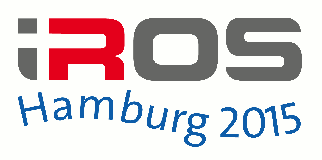Plenaries
Practice makes Perfect? The Role of Place-Dependent Expertise in Mobile Robotics
Paul Newman, Mobile Robotics Group, University of Oxford
Tuesday, September 29, 10:30-11:15, Hall 2
Abstract
Is it worth considering trading everywhere generality (mediocrity) for local, place specific excellence? This talk will make the case, that for some use-cases, the answer is "yes, we really should''. If your robot is mobile but only in a local area then we might think of imbuing that machine with competencies that explicitly over-fit to its own workspace. This policy of learning to become the local expert forces us to think about learning spatially and temporally varying feature detectors, bespoke classifiers, rich temporally indexed visual models and even place dependent controllers. This talk will discuss how such competencies, wrapped up in a life long learning framework, can contribute to a delightful increase in performance in the place of work. Isn't that, sometimes, exactly what we want?
Biography of Paul Newman
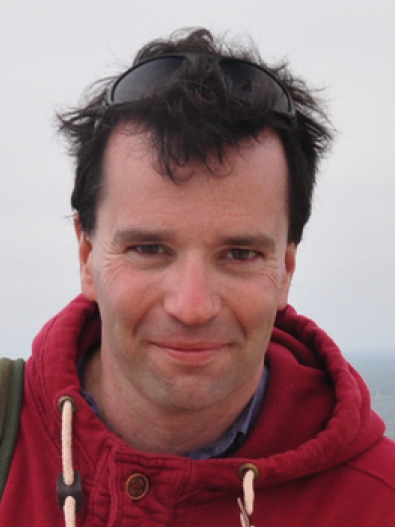 Paul Newman is the BP Professor of Information Engineering at the University of Oxford and an EPSRC Leadership Fellow. He heads and founded the Mobile Robotics Group within the Department of Engineering Science which has developed a strong reputation in mobile autonomy - developing machines and robots which map, navigate through, and understand their environments. His focus lies on pushing the boundaries of navigation and autonomy techniques in terms of both endurance and scale. He enjoys collaborations with many industrial partners which provide exploitation opportunities to drive the research. The group has developed a keen focus on intelligent transport.
Paul Newman is the BP Professor of Information Engineering at the University of Oxford and an EPSRC Leadership Fellow. He heads and founded the Mobile Robotics Group within the Department of Engineering Science which has developed a strong reputation in mobile autonomy - developing machines and robots which map, navigate through, and understand their environments. His focus lies on pushing the boundaries of navigation and autonomy techniques in terms of both endurance and scale. He enjoys collaborations with many industrial partners which provide exploitation opportunities to drive the research. The group has developed a keen focus on intelligent transport.
He obtained an M.Eng. in Engineering Science from Oxford University, Balliol College in 1995. He then undertook a Ph.D. in autonomous navigation at the Australian Center for Field Robotics, University of Sydney, Australia. In 1999 he returned to the United Kingdom to work in the commercial sub-sea navigation industry. In late 2000 he joined the Dept of Ocean Engineering at M.I.T. where as a post-doc and later a research scientist, he worked on algorithms and software for robust autonomous navigation for both land and sub-sea agents. In early 2003 he returned to Oxford as a Departmental Lecturer in Engineering Science before being appointed to a University Lectureship in Information Engineering and becoming a Fellow of New College in 2005, Professor of Engineering Science in 2010 and BP Professor of Information Engineering and Fellow of Keble College in 2012. He was elected Fellow of the Royal Academy of Engineering and the IEEE in 2014 for contributions to robot navigation. He likes things to know where they are.
The New Robotics Age: Meeting the Physical Interactivity Challenge
Oussama Khatib, Artificial Intelligence Laboratory, Department of Computer Science, Stanford University
Tuesday, September 29, 16:00-16:45, Hall 2
Abstract
The generation of robots now being developed will increasingly touch people and their lives. They will explore, work, and interact with humans in their homes, workplaces, in new production systems, and in challenging field domains. The emerging robots will provide increased operational support in mining, underwater, and in hostile and dangerous environments. While full autonomy for the performance of advanced tasks in complex environments remains challenging, strategic intervention of a human will tremendously facilitate reliable real-time robot operations. Human-robot synergy benefits from combining the experience and cognitive abilities of the human with the strength, dependability, competence, reach, and endurance of robots. Moving beyond conventional teleoperation, the new paradigm − placing the human at the highest level of task abstraction − relies on robots with the requisite physical skills for advanced task behavior capabilities. Such connecting of humans to increasingly competent robots will fuel a wide range of new robotic applications in places where they have never gone before. This discussion focuses on robot design concepts, robot control architectures, and advanced task primitives and control strategies that bring human modeling and skill understanding to the development of safe, easy-to-use, and competent robotic systems. The presentation will highlight these developments in the context of a novel underwater robot, Ocean One, called O2, developed at Stanford in collaboration with Google Robotics, and KAUST.
Biography of Oussama Khatib
 Oussama Khatib received his PhD from Sup’Aero, Toulouse, France, in 1980. He is Professor of Computer Science at Stanford University. His research focuses on methodologies and technologies in human-centered robotics including humanoid control architectures, human motion synthesis, interactive dynamic simulation, haptics, and human-friendly robot design. He is a Fellow of IEEE. He is Co-Editor of the Springer Tracts in Advanced Robotics (STAR) series and the Springer Handbook of Robotics, which received the PROSE Award for Excellence in Physical Sciences & Mathematics. Professor Khatib is the President of the International Foundation of Robotics Research (IFRR). He has been the recipient of numerous awards, including the IEEE RAS Pioneer Award in Robotics and Automation, the IEEE RAS George Saridis Leadership Award in Robotics and Automation, the IEEE RAS Distinguished Service Award, and the Japan Robot Association (JARA) Award in Research and Development.
Oussama Khatib received his PhD from Sup’Aero, Toulouse, France, in 1980. He is Professor of Computer Science at Stanford University. His research focuses on methodologies and technologies in human-centered robotics including humanoid control architectures, human motion synthesis, interactive dynamic simulation, haptics, and human-friendly robot design. He is a Fellow of IEEE. He is Co-Editor of the Springer Tracts in Advanced Robotics (STAR) series and the Springer Handbook of Robotics, which received the PROSE Award for Excellence in Physical Sciences & Mathematics. Professor Khatib is the President of the International Foundation of Robotics Research (IFRR). He has been the recipient of numerous awards, including the IEEE RAS Pioneer Award in Robotics and Automation, the IEEE RAS George Saridis Leadership Award in Robotics and Automation, the IEEE RAS Distinguished Service Award, and the Japan Robot Association (JARA) Award in Research and Development.
From Geometry to Startups and to …Incubators
Zexiang Li, Robotics Institute, Hong Kong University of Science and Technology
Wednesday, September 30, 10:30-11:15, Hall 2
Abstract
Studies of a robotic system or a manufacturing research problem start usually with modeling the underlying configuration space and then use properties of the space for analysis and/or synthesis/design/control of the system or the problem. Traditionally, local (Euclidean) properties of the spaces and calculus on R^nare been used for these studies. More than 30 years ago, Roger Brockett introduced Lie group theory for global studies of robot kinematics. This effort was continued and expanded by Sastry’sgroup at Berkeley and a number of other prominent researchers in the robotics community. In this talk, I will present major achievements and progresses of this research program. First, I will review the basic concepts of differentiable manifolds and Lie group theory and then show how (unified) geometric models can be developed for robotic systems such as rigid body motion, open-chain and closed-chain manipulators, multi-fingered hand grasping and manipulation, bio-mechanic systems and robot calibration, and for manufacturing research problems such as workpiecelocalization and tolerancingformulation and verification. Finally, I will highlight how geometric properties of the modeling spaces and the corresponding calculus tools can be exploited for more efficient solutions of the underlying optimization problems.
From a different perspective, I will describe a few other innovations we introduced into our curriculum program that filled in the missing gap for commercialization of our research. Over the last 15 years or so, several startups, including Googol Technology, a leading motion control company in China, DJI,a global leader in drones products and Lie Group Automation (or QKM), a provider of innovative robot solutions to the massive C^3 (Computers, Communication and Consumer products) manufacturing industry in China, have spun off from my lab. Burrowing from L. Page’s words, I credit this effort to “Geometry as inspiration”.
Rapid prototyping and fast scaling ups are essential for any robotic startups to succeed. We benefited greatly from the amazing manufacturing eco-system of the Pearl River Delta (PRD) region (also known as the Hollywood of Makers) and believe that this resource is also sought-after by robotic startups elsewhere. We established the SongshanLake Robotic Startup Facility (SSL RSF) at the heart of the PRD region to assist entrepreneurs of our community. I will highlight some key features of theSSL RSF.
Biography of Zexiang Li
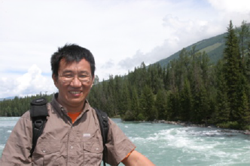 Zexiang Li attended the South-Central University in 1978, received his BS (with honor) degrees in Electrical Engineering and Economics from Carnegie-Mellon University in 1983, his MS degree in EECS in 1985, MA in mathematics and PhD in EECS in 1989, all from the University of California at Berkeley. He worked at ALCOA, the Robotics Institute of CMU and the AI Lab of MIT (89-90). He was an assistant professor at the Courant Institute of New York University (90-92). In 1992, he joined the Department of Electronic and Computer Engineering of the Hong Kong University of Science and Technology and is currently a professor of the department. He founded the Automation Technology Center (ATC) and the Robotics Institute (RI) of HKUST.
Zexiang Li attended the South-Central University in 1978, received his BS (with honor) degrees in Electrical Engineering and Economics from Carnegie-Mellon University in 1983, his MS degree in EECS in 1985, MA in mathematics and PhD in EECS in 1989, all from the University of California at Berkeley. He worked at ALCOA, the Robotics Institute of CMU and the AI Lab of MIT (89-90). He was an assistant professor at the Courant Institute of New York University (90-92). In 1992, he joined the Department of Electronic and Computer Engineering of the Hong Kong University of Science and Technology and is currently a professor of the department. He founded the Automation Technology Center (ATC) and the Robotics Institute (RI) of HKUST.
Zexiang Li received the ALCOA Foundation Fellowship in 1979, and the E. Anthony Fellowship in 1983. He was a recipient of the University Scholar award from CMU in 1983, the E.I. Jury award from UC Berkeley in 1989, the Research Initiation award from NSF (US) in 1990, the Outstanding Young Researcher award (Class B) from NSF China in 2000, the LEAD award from AMI, USA in 2001, and the Natural Science award (3rd class) from China in 1997. He became an IEEE Fellow in 2008. Zexiang Li served as a panel member of the Hong Kong Research Grants Council (RGC), an overseas member of the Natural Science Foundation of China (NSFC), and an associate editor for the IEEE Trans. on Robotics and Automation. He was the general Chair for the 2011 IEEE International Conference on Robotics and Automation (ICRA).
Zexiang Li's research areas of interests include multifingeredrobotic hand, parallel manipulators, workpiecelocalization and inspection, motion control, precision assembly, and unmanned aerial vehicles (UAVs). He is the author of more than 100 journal and conference papers, and four books, including A Mathematical Introduction to Robotic Manipulation (CRC Press 1993), and Nonholonomic Motion Planning (Kluwer 1994).
Zexiang Li co-founded several companies with his colleagues and students from the Automation Technology Center, including Googol Technology, a leading motion control company in China, DJI, a global leader in drones products, Lie Group Automation (or QKM), ePropulsion, the SongshanLake Robotic Startup Facility (SSL RSF) and the learwater Bay Venture Capital.
Robotic Governance: Paving the Way for Generation ‘R’
Bernd Liepert, Chief Innovation Officer, KUKA AG and President, euRobotics AISBL
Wednesday, September 30, 16:00-16:45, Hall 2
Abstract
Guidelines and frameworks for a generation of robotic natives Robotics will change the world! It will unleash at least the same disruptive and transformational power within the next 50 years as mainstream IT-technology and the Internet have in the last half of a decade. This will not only apply to the steadily growing field of industrial robotics. Driven by a number of technological enablers, e.g. the broad availability of low cost but high performance sensor technologies, robotics will be unchained and liberated from its cells. It will conquer completely new domains until it permeates all areas of life, pervading all parts of the human experience realm.
The first seal has already been broken: establishing and fostering sensitive and safe robotics, the foundations for cooperative robotic systems and human-machine-interaction have been laid. In the past, robots were surrounded by heavy safety cages, locking humans out and machines in; these borders have now been obliterated for the first time. Workers can directly interact with automation systems as if they were colleagues.
Starting in the industrial domain, robots will enhance and augment human capabilities more and more over the years. This will help to solve some of mankind’s biggest challenges of the next century, e.g., over-ageing of societies driven by demographic change and a hyperbolic growth in demand for products. New markets will emerge due to the augmented demand resulting from exuberant worldwide population growth.
As the required technologies become available over time, the pervasion and assimilation of robotics in all fields and domains of the living environment will follow phases similar to those of the progression of mainstream IT-technologies, including the internet: Systems became smaller, mobile, ubiquitous and then even pervasive.
Nurtured and enabled by the technological breakthroughs in industrial automation, robotics will permeate other domains. In this near-future world, where robotic systems have become a commodity and facilitate peoples’ lives, a new generation will grow up in a society that is enriched and augmented by robotics in every imaginable way. Robotics will be tailored into many everyday objects, becoming an integral part of all kinds of appliances.
This Generation Robotics will not be intimidated by direct interaction with any form of robotic and automated system. Self-driving cars, autonomous service robots, automatized logistics and robotics in retail will be perceived as just as normal as the internet, smartphones and tablets are today. Surely, this change will not happen by tomorrow, but I strongly believe that the children of our children will grow up as Robotic Natives and hence be the first Generation ‘R’ in the history of mankind.
However, in order to pave the way for this new generation, we need to discuss and establish a set of guidelines and frameworks to address questions about the ethical, juridical, social and political impact of robotics on our daily life. This Robotic Governance has to be developed and discussed by as many stakeholders as possible -- in robotics and other interdisciplinary fields; in science and research, industry, politics and society.
Biography of Bernd Liepert
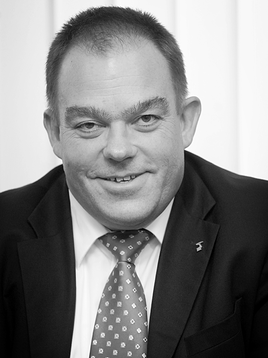 Dr. Bernd Liepert is the Chief Innovation Officer of KUKA AG, a world leading manufacturer of industrial robots.
Dr. Bernd Liepert is the Chief Innovation Officer of KUKA AG, a world leading manufacturer of industrial robots.
Dr. Liepert earned his diploma in mathematics in 1990 from the University of Augsburg and his honorary doctor degree from University of Magdeburg in 2011.
Since 1990 Dr. Liepert has worked in changing positions for KUKA. From 1990 to 1996 he worked as mathematician and developer at KUKA Schweissanlagen + Roboter GmbH before he took charge as head of development of the newly founded company KUKA Roboter GmbH until 1997. From 1998-1999 he was a member of KUKA Roboter GmbH Board of Management, responsible for development and design. From 2000-2009 Dr. Liepert was the CEO of KUKA Roboter GmbH. From 2010 to January 2015 he was the CTO of KUKA AG, responsible for technology and development of the whole KUKA group. As Chief Innovation Officer of KUKA AG, Dr. Liepert is now responsible for expanding innovations at KUKA where he can apply his vast robotics experience at the interface between technology and the market.
From 2008-2015 Dr. Liepert was President of EUROP, the European Robotics Technology Platform, and subsequently President of euRobotics AISBL – the European Robotics Association. euRobotics was founded in September 2012 and has become the private side of SPARC, the European Public-Private Partnership in Robotics in 2013. As president of these associations Dr. Liepert is leading the European robotics community and representing it at high political levels.
From Mimicry to Mastery: Creating Machines that Augment Human Skill
Gregory D. Hager, Johns Hopkins University
Thursday, October 1, 10:30-11:15, Hall 2
Abstract
We are entering an era where people will interact with smart machines to enhance the physical aspects of their lives, just as smart mobile devices have revolutionized how we access and use information. Robots already provide surgeons with physical enhancements that improve their ability to cure disease, we are seeing the first generation of robots that collaborate with humans to enhance productivity in manufacturing, and a new generation of startups are looking at ways to enhance our day to day existence through automated driving and delivery.
In this talk, I will use examples from surgery and manufacturing to frame some of the broad science, technology, and commercial trends that are converging to fuel progress on human-machine collaborative systems. I will describe how surgical robots can be used to observe surgeons “at work” and to define a “language of manipulation” from data, mirroring the statistical revolution in speech processing. With these models, it is possible to recognize, assess, and intelligently augment surgeons’ capabilities. Beyond surgery, new advances in perception, coupled with steadily declining costs and increasing capabilities of manipulation systems, have opened up new science and commercialization opportunities around manufacturing assistants that can be instructed “in-situ.” Finally, I will close with some thoughts on the broader challenges still be to surmounted before we are able to create true collaborative partners.
Biography of Gregory D. Hager
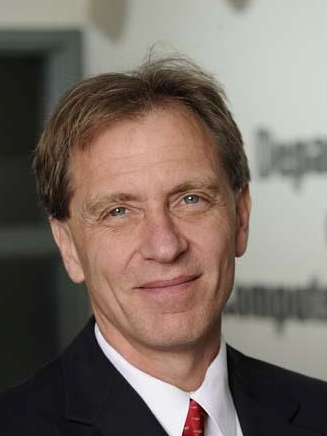 Gregory D. Hager is the Mandell Bellmore Professor of Computer Science at Johns Hopkins University. His research interests include collaborative and vision-based robotics, time-series analysis of image data, and medical applications of image analysis and robotics. He has published over 300 articles and books in these areas. Professor Hager is also Chair of the Computing Community Consortium, a board member of the Computing Research Association, and is currently a member of the governing board of the International Federation of Robotics Research. In 2014, he was awarded a Hans Fischer Fellowship in the Institute of Advanced Study of the Technical University of Munich where he also holds an appointment in Computer Science. He is a fellow of the IEEE for his contributions to Vision-Based Robotics, and has served on the editorial boards of IEEE TRO, IEEE PAMI, and IJCV. Professor Hager received his BA in Mathematics and Computer Science Summa Cum Laude at Luther College (1983), and his MS (1986) and PhD (1988) from the University of Pennsylvania. He was a Fulbright Fellow at the University of Karlsruhe, and was on the faculty of Yale University prior to joining Johns Hopkins. He is founding CEO of Clear Guide Medical.
Gregory D. Hager is the Mandell Bellmore Professor of Computer Science at Johns Hopkins University. His research interests include collaborative and vision-based robotics, time-series analysis of image data, and medical applications of image analysis and robotics. He has published over 300 articles and books in these areas. Professor Hager is also Chair of the Computing Community Consortium, a board member of the Computing Research Association, and is currently a member of the governing board of the International Federation of Robotics Research. In 2014, he was awarded a Hans Fischer Fellowship in the Institute of Advanced Study of the Technical University of Munich where he also holds an appointment in Computer Science. He is a fellow of the IEEE for his contributions to Vision-Based Robotics, and has served on the editorial boards of IEEE TRO, IEEE PAMI, and IJCV. Professor Hager received his BA in Mathematics and Computer Science Summa Cum Laude at Luther College (1983), and his MS (1986) and PhD (1988) from the University of Pennsylvania. He was a Fulbright Fellow at the University of Karlsruhe, and was on the faculty of Yale University prior to joining Johns Hopkins. He is founding CEO of Clear Guide Medical.
Supercomputing the loop of Biomechanics and Neuroscience
Yoshihiko Nakamura, University of Tokyo
Thursday, October 1, 16:00-16:45, Hall 2
Abstract
The human whole body is a complex and hierarchical multi-physics system. Computer simulation of the human whole body is in the grand challenge of robotics. The current focus of our study is on closing the loop of the neural system and the musculoskeletal system.
Although the knowledge of the biomechanical structure of human body in every scale is well documented in anatomy, we do not know how the whole system works through their hierarchical and horizontal interactions. Mechanics and dynamics in robotics provide the tools for describing the complex system, while optimization and algorithm in robotics offer the means for solving the results of interactions.
Study of brain science discovered the structure of neural system. The brain anatomy also shows the knowledge of the structure and of the connection among the local areas with interpretation of their functions. However, the pictures are still and static. While dynamics of neurons is mathematically well modelled, dynamical behavior of the neuron pool remains unexplored.
What kind of dynamic views will show up by connecting and closing the loop of the two dynamical systems, namely, the neural anatomy and the body anatomy? This talk will introduce our approach on modeling for the human whole body simulation under the national super computer project of Japan in collaboration with neuroscientists, medical doctors, and scientists in computational mechanics.
Biography of Yoshihiko Nakamura
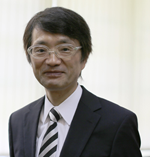 Yoshihiko Nakamura is Professor at Department of Mechano-Informatics, University of Tokyo. He received Doctor of Engineering Degree from Kyoto University. For 1987-1991, he worked at University of California, Santa Barbara, as Assistant and Associate Professor. Humanoid robotics, cognitive robotics, neuro musculoskeletal human modeling, biomedical systems, and their computational algorithms are his current fields of research. He is Fellow of JSME, Fellow of RSJ, Fellow of IEEE, and Fellow of WAAS. Dr. Nakamura serves as President of IFToMM (2012-2015). Dr. Nakamura is Foreign Member of Academy of Engineering Science of Serbia, and TUM Distinguished Affiliated Professor of Technische Universität München.
Yoshihiko Nakamura is Professor at Department of Mechano-Informatics, University of Tokyo. He received Doctor of Engineering Degree from Kyoto University. For 1987-1991, he worked at University of California, Santa Barbara, as Assistant and Associate Professor. Humanoid robotics, cognitive robotics, neuro musculoskeletal human modeling, biomedical systems, and their computational algorithms are his current fields of research. He is Fellow of JSME, Fellow of RSJ, Fellow of IEEE, and Fellow of WAAS. Dr. Nakamura serves as President of IFToMM (2012-2015). Dr. Nakamura is Foreign Member of Academy of Engineering Science of Serbia, and TUM Distinguished Affiliated Professor of Technische Universität München.
